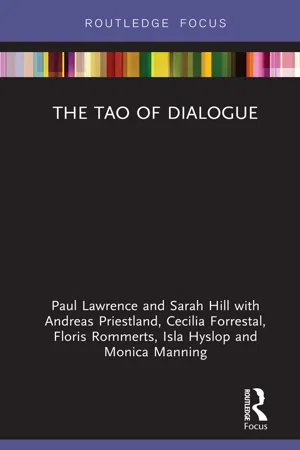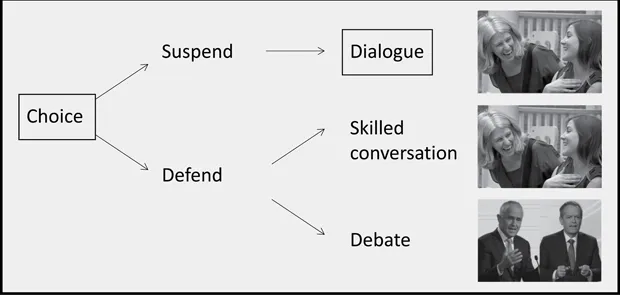![]()
![]()
Michael put on his coat and headed for the elevators, wondering what on earth to do. Elaine, his Communications Director, had just told him the news. The Government had announced proposed changes to the law that, if implemented, would effectively wipe out one quarter of the business. The Government said the changes were necessary to encourage competition. They would certainly do that. New companies would be able to enter the market without any of the infrastructure that his company had invested heavily in over the last five years.
As Michael walked down the street he recalled the conversation with Elaine. The company would step up their lobbying efforts, she said, but he heard the tension in her voice. He had spoken to Nicole too, the Finance Director. She seemed less concerned. She said the company could cope. She had been with the company just nine months, arriving from another organisation where she had led a major downsizing programme. She told a great story about the programme at interview, but Michael had kept an eye on subsequent events and knew the organisation had recently been sold for a fraction of its original value. He wondered if she’d be useful or not. Tim, the Marketing Director, was initially downcast, but soon raised the subject of a new acquisition, a project he had been advocating for months without winning support from anyone else on the leadership team. He seemed oblivious to the bigger picture, focused only on his own agenda.
This company didn’t do change well. The last time they embarked on a major change programme was three years previously. Michael had been Finance Director at the time, helping bed down the acquisition of a competitor business. The acquisition had been the old CEO’s idea, and it hadn’t gone well. Though the deal made sense on paper, neither their staff nor the staff of the purchased company ever really bought into the deal. People found it too hard to trust colleagues who had previously been competitors. Old tensions between certain staff members refused to go away and efforts to foster collaboration failed. Michael, along with the rest of the executive team, had worked hard to communicate the logic of the purchase, but to no avail. When key senior staff refused to comply with what was being asked, the CEO had asked four of them to leave, two from each side. They left, but not without taking other key staff with them. The relationship between members of the executive team fractured, and engagement levels across the organisation plummeted. More and more people left, and it was hard to attract replacements. In the end, the CEO and the Supply Chain Director were sacked, and the old Marketing Director soon followed.
Memories of those miserable days surfaced anew as Michael waited for his train to arrive. He couldn’t go through all that again. But what to do? The company still hadn’t recovered from those events of just 18 months ago. People still identified themselves with the companies they worked with before the acquisition. Trust levels were low and it was a daily challenge to get the right people round the table to make the decisions that needed to be made. This wasn’t an organisation ready to align around a new future.
Elaine had already suggested they contract the services again of the consultants who had steered them through the last change. Michael couldn’t think why. Nothing they had recommended had worked. No, he decided, as he found a seat on the train, they would need to do things very differently this time.
![]()
By the end of the week rumours about the impending changes had begun to circulate around head office and out into the regional offices. Elaine told Michael she thought he needed to gather all the staff together – to hold a Town Hall meeting. People were getting anxious, she said, anxieties that needed to be managed if they weren’t to disrupt ongoing business. Some people were saying that the company was already planning redundancies. She drafted up a short speech for him and prepared a list of anticipated questions and answers. Elaine’s suggestion made sense, and the rest of the leadership team also encouraged him to stand up and tell everyone what was going on. Rather than leave people to stew over the weekend, Michael decided to call an impromptu gathering late on Friday afternoon.
‘Good afternoon, everyone,’ he began, looking out into a room full of people. ‘By now you will have heard that the Government is floating new laws that will have a significant impact on our business.’
Everyone sat silent, staring at him, some with arms folded. Michael saw Elaine at the back of the room standing straight backed and sombre. She nodded slightly, encouraging him to continue.
‘It’s important we recognise these are currently just proposals,’ Michael continued. ‘It will be many months before we find out what will actually happen. In that time, we will be putting our case to government, arguing against new laws that will only lead to job losses and disruption. While this all plays out we must work even harder to cement our position in the marketplace. It is up to us all to pull together and do what needs to be done.’
It was a short speech. While he hadn’t expected applause, he was surprised that no one spoke.
‘Any questions?’ he said, pulling from his pocket Elaine’s list of questions and answers. He had memorised them at lunchtime, but it helped to hold the list in his hand.
A hand went up. ‘Will there be any redundancies?’ someone asked.
‘We have no plans to make people redundant,’ Michael answered.
‘But what if these new laws go through, will there be redundancies then?’
Michael shook his head. ‘It’s too early to be thinking about redundancies,’ he said. ‘For one thing, it’s unlikely these proposals will go through as currently framed. There will be some kind of review process. We will review our strategy as the process unfolds and make decisions in due course.’
A hand went up somewhere in the middle of the room. Michael nodded.
‘If the new laws go through, I’ve heard we may lose up to a third of our business,’ said someone Michael couldn’t see. ‘What strategies are there for making that up?’
Michael nodded again. ‘First, we doubt the impact will be quite that significant,’ he said. ‘But clearly we may need to move faster than planned to identify new growth opportunities. Again, that will be up to us all to make that happen.’
A few people muttered quietly, but no one else asked a question. Michael looked at the clock and saw it was almost five o’clock. ‘Thank you all for your time today,’ he said. ‘If anyone would like to stay behind for a while, we will be serving drinks.’ He pointed to the back of the room where bottles of wine and beer sat on a table next to some glasses.
There was a shuffling of chairs and a low rumble of conversation as people drifted slowly out of the room, leaving a couple of dozen behind with whom to mingle. Elaine strode forward and patted him on the back.
‘Good job,’ she said. ‘Clear and unambiguous.’ Nicole and Tim congratulated him too, before moving away to talk to staff in their respective divisions.
Feeling somewhat relieved, Michael helped himself to a glass of white wine, rubbing shoulders with someone he recognised from the HR team. Sharon? Or Sheryn? He couldn’t quite recall. He smiled. ‘What did you think of that?’ he asked.
She shrugged her shoulders and smiled hesitantly. ‘It depends on what you were hoping to achieve.’
‘What do you mean?’ Michael asked, surprised.
‘A Town Hall is a Town Hall,’ she said. ‘As Town Halls go, I thought it was fine.’
‘You work in HR, don’t you?’ Michael asked, curious.
‘I do,’ she replied. ‘I’m Hannah by the way.’
‘Right,’ Michael said, nodding. Not Sharon, then.
‘Do you mind if I give you a bit of feedback?’ she said, cheeks burning red. ‘It’s not really my place to say, but I wouldn’t have held a Town Hall at all.’
‘Oh,’ said Michael, feeling slightly put out. ‘What would you have done?’
‘I would have gone for a more dialogic approach,’ said Hannah. ‘In smaller groups. A Town Hall is essentially monologic. No one has a chance to ask questions, not real questions, or to engage with you in real dialogue. It was you, basically, telling them what you thought they wanted to hear. But I’m afraid you may have missed the mark.’ She waved an arm at the almost empty room. Michael noticed that the rest of the leadership team had gone.
‘I don’t know what you mean,’ Michael said. ‘What’s dialogic and monologic?’
‘Ah,’ said Hannah, before taking the time to explain. By the time she had finished Michael had drunk a second glass of wine and gotten a glimpse of what needed to happen next.
![]()
Before and during every conversation we make a choice (consciously or otherwise) as to what type of conversation we want to have. Do we want to engage in monologue or dialogue? There is no right or wrong choice, but there is a choice. The choice is whether to defend or suspend.
If I choose to defend, then I choose to protect and uphold a particular position or perspective. In Michael’s case, for example, he chose to defend a perspective that said, ‘we’re not going to talk about options today – there will be a review process later.’ In contrast, if I choose to suspend, then I am more open. Had Michael suspended his position and view, he would have been more likely to respond to a question like ‘What strategies are there for making that up?’ with a response such as ‘We don’t have any yet, but I’d be keen to hear what you think.’ In dialogue participants are open to new possibilities. Contributions build upon contributions, and new insights emerge. By choosing to defend, Michael inadvertently narrowed the range of possible outcomes. People didn’t feel their views would be welcomed and chose not to engage.

